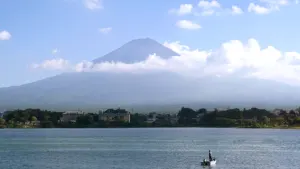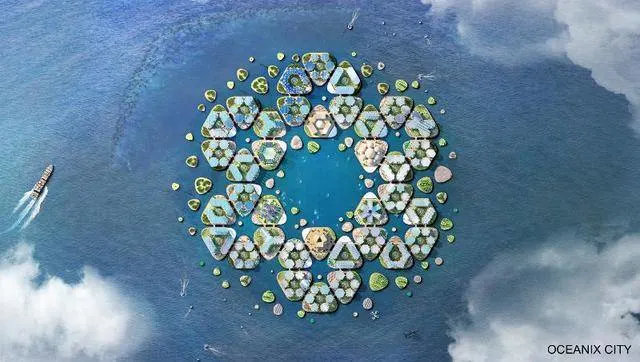
Floating city designed to withstand Category 5 hurricanes
Here's how living ON the water can actually protect you from severe weather events, such as hurricanes.
The United Nations has presented a project to build a floating city that can hold close to 10,000 residents. The city, designed by architect Bjarke Ingels, is meant to withstand natural disasters such as floods, hurricanes, and tsunamis. The island city would potentially be located about a mile from major coastal cities and would be towed to safer locations in the event of a disaster.
The United Nations gathered a group of builders, engineers, and architects to put together this concept known as OCEANIX CITY, an affordable floating city of sustainable characteristics. OCEANIX CEO, Marc Collins, wishes to have this built so that he can move beyond the initial theory of the project. Housing shortages and threats of rising sea levels have been some of the main motivational aspects to push the idea forward.
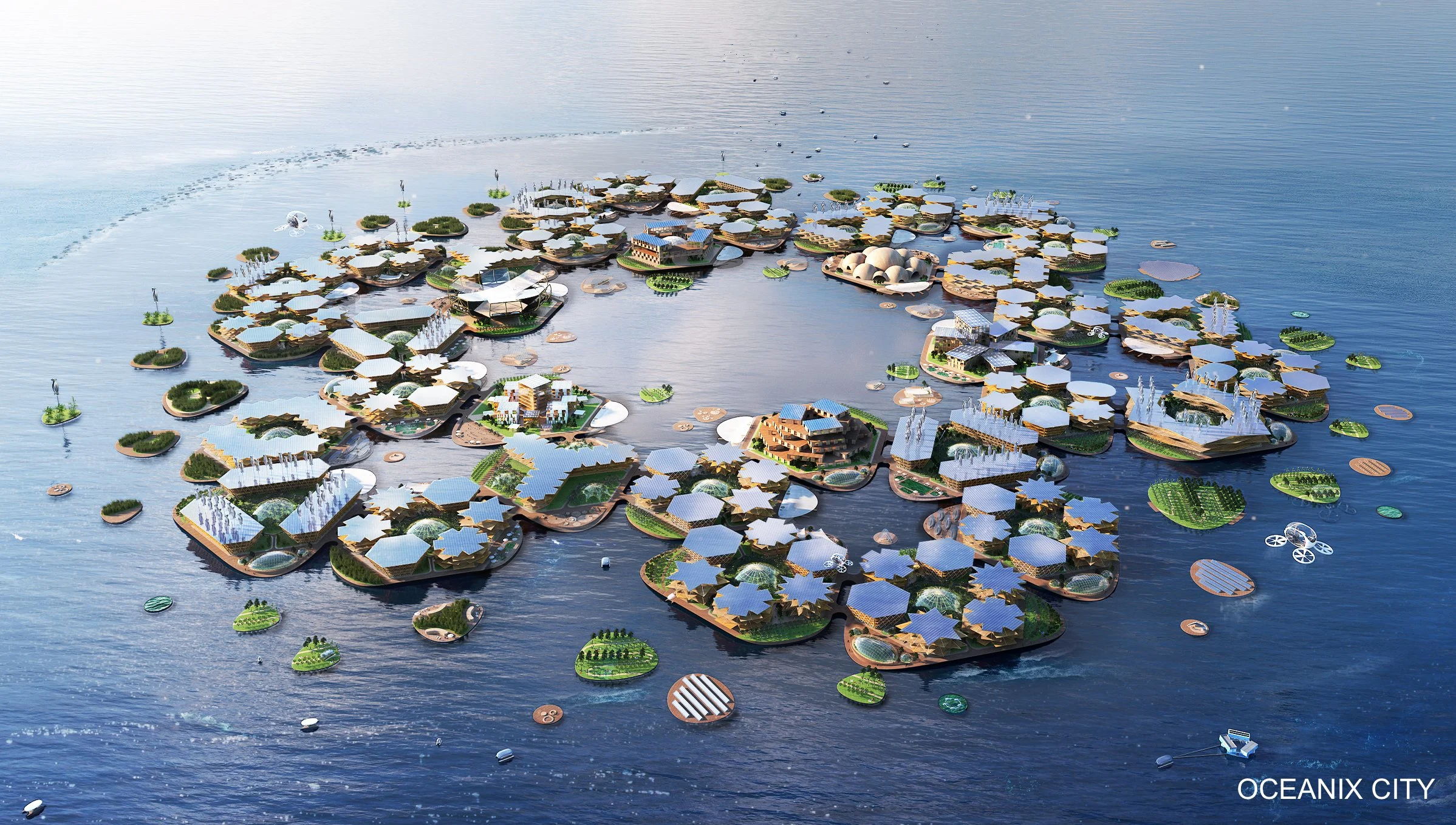
Courtesy: OCEANIX/BIG-Bjarke Ingels Group.
SEE ALSO: Global sea level rise on faster pace than expected
The designed city uses hexagons because they are considered the most efficient of all architectural shapes. Each “village” is made up of six hexagonal platforms which would basically be like neighbourhoods. The group of villages would be home to about 10,000 residents. They feel as though that is the ideal number because it would allow the island to be self-sufficient, by producing its own power, fresh water, and heat.
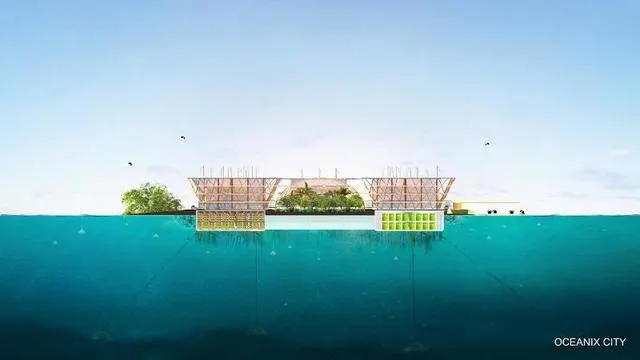
Designers consider a group of six platforms to be a village. The entire city would contain six villages, for a total of around 10,000 residents. Courtesy: OCEANIX/BIG-Bjarke Ingels Group.
Floating cities would not allow any high emitting vehicles to circulate, and garbage trucks would be substituted by pneumatic trash tubes that would transport garbage to a sorting station where it would be recycled. The city would also consider using drones for delivery purposes.

High emitting vehicles would be prohibited in the villages. Courtesy: OCEANIX/BIG-Bjarke Ingels Group.
DON'T MISS: Glaciers are melting at their fastest pace in 400 years
Additionally, farming would be done in the ocean by growing food beneath the surface of the water. There, cages could be used to harvest scallops, kelp, muscles, and other forms of seafood. Aquaponic systems would use waste from fish to help fertilize plants, while vertical farms would generate year-round produce. Both of these technologies could also help the city remain self-sufficient during a hurricane or other natural disaster.
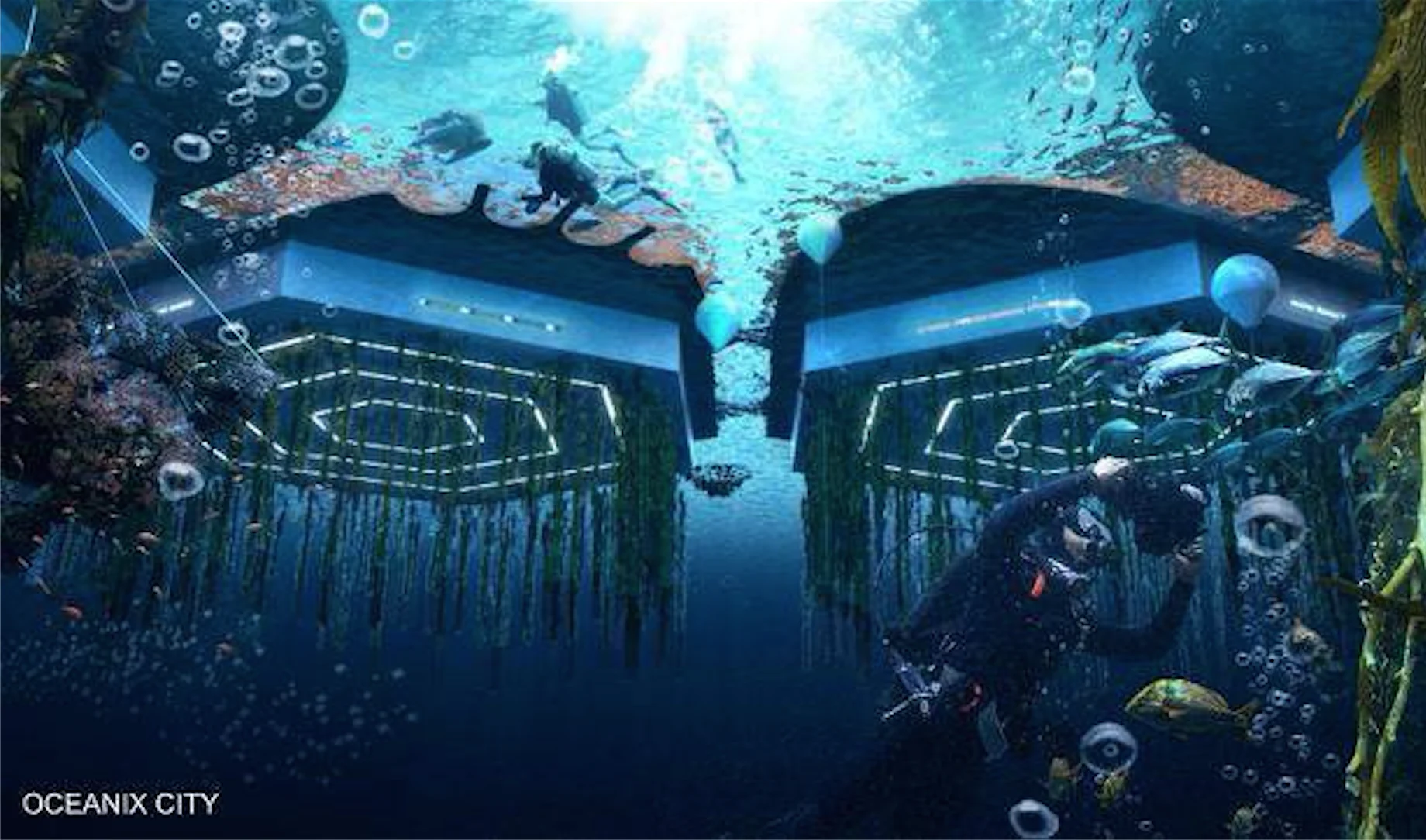
The concept calls for ocean farming, which would involve growing food beneath the surface of the water. Courtesy: OCEANIX/BIG-Bjarke Ingels Group.
The platforms would be reinforced by Biorock -- a material created by exposing underwater minerals to an electric current. This leads to the formation of a limestone coating that's three times harder than concrete, but can still be made to float. The substance becomes stronger with age and can even repair itself as long as it's still exposed to the current. This allows it to withstand harsh weather conditions.
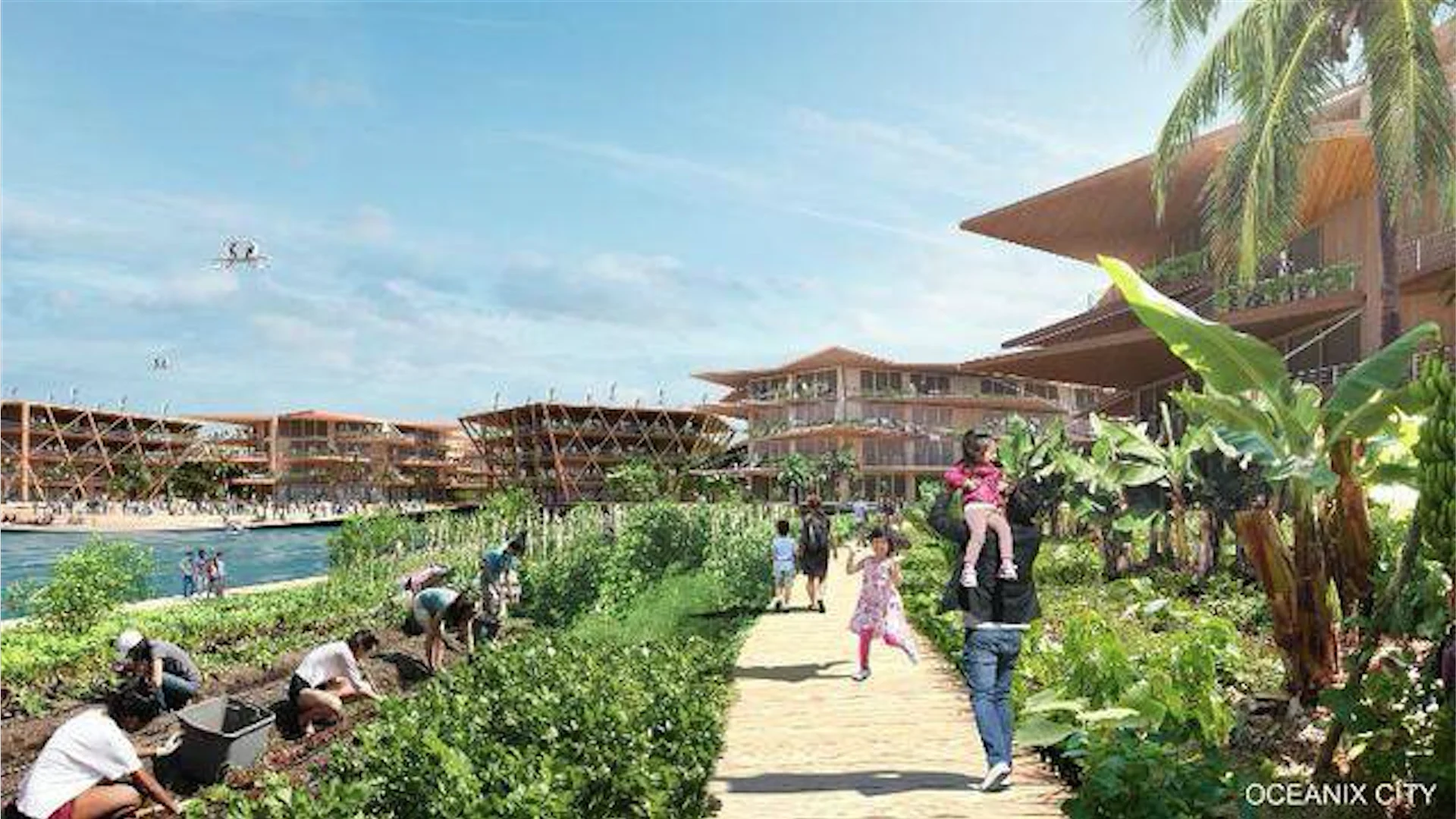
The city would not contain any high rises to keep a low centre of gravity. Buildings would be between four and seven stories high. Courtesy: OCEANIX/BIG-Bjarke Ingels Group.
There would be no high-rises in the city to keep the center of gravity lower, so building height would oscillate between 4 and 7 stories at most. The materials used for the construction would be all sustainable, like timber or bamboo. It would also have the option of being disassembled so that future architects can redesign the city structure as desired.
Ingels referred to his vision for the city as "utopian pragmatism", the idea that we can accomplish grand design feats in concrete, practical ways. Although not everyone likes living on the water, this type of city would be more affordable than major urban areas, and definitely less vulnerable to natural disasters. Homes built in the city would even provide a swaying, calming effect to help you sleep. People would never sleep better than on a floating island, says Ingels.
Source: OCEANIX
Photo Credit: OCEANIX/BIG-Bjarke Ingels Group.











